INVITE SPEAKERS
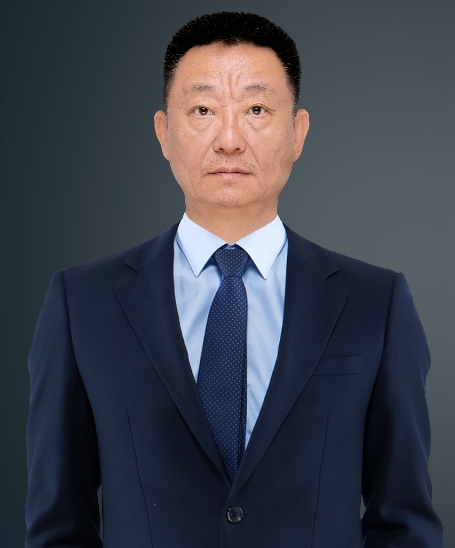
Xiang Peng
Shenzhen University, China
Speech Title: AI-enabled 3D
Imaging and Metrology: A Follow-up Approach from
Sino-German Joint Program
Abstract: In this talk we
are going to present a new research advance,
spinning-off from the Sino-German Research Group:
Computational Imaging and Metrology which was sponsored
by Sino-German Center (NSFC-DFG through GZ 1391). The
topic in this presentation will include a short
introduction to GZ 1391 and then start with a selected
post-research approach of our recent advances follow-up
afore-mentioned Joint Research Project (JRP).
In terms of computational imaging and metrology or
intelligent 3D-vision, we need to deal with the
information of 3D point clouds in spatial space, such as
point-clouds registration, point-clouds segmentation and
so-on so forth. In this talk we would show a
proof-of-concept demonstration on how a hand-held 3D
scanner (a mobile 3D vision system) becomes more
intelligent by incorporating the Deep Neuro Network
(DNN) into a scenario of re-localization of mobile 3D
vision system. This mobile 3D vision system (hand-held
3D scanner) has been developed at Anhua Optoelectronic
Technology Co. Ltd. AhOpto in Shenzhen). We will
showcase that the performance of re-localization of
hand-held 3D- scanner becomes more automatic,
intelligent and efficient compared with existed
techniques, resulting in a more intelligent 3D vision
system.
Biodata: Dr. Xiang Peng is a full professor at the Shenzhen University and Chief Scientist at the AhOpto Co. Ltd. in Shenzhen. Dr. Peng received his BS, MS, PhD in Optical Engineering all from Tianjin University. He was awarded a Research Fellowship by Alexander von Humboldt Foundation and worked at Institute of Applied Optics, University of Stuttgart as Humboldt Fellow. He also held several visiting positions at the University of Houston (USA), University of Calgary (Canada), and Hong Kong University of Science and Technology (HKUST, HK). Dr. Peng’s research interests include computational imaging and metrology, AI-enabled optical techniques, optical security, light-field imaging and metrology, imaging through complex media. His research activities have been supported by Natural Science Foundation of China (NSFC), Sino-German Center (a joint funding body of NSFC and DFG), as well industrial sectors. He has authored and co-authored 200+ research articles in peer-reviewed scientific journals and issued tenths of inventions, where some of patents have been transferred to the industry.

Girija Chetty
University of Canberra, Australia
Speech Title:
Multimodal Generative Models: The Next Frontier in Artificial Intelligence
Abstract: Multimodal generative models represent a cutting-edge approach in artificial intelligence (AI),
enabling the synthesis and integration of diverse data modalities such as text, images, audio, and video.
These models are designed to process and generate outputs across multiple modalities simultaneously,
making them highly versatile for a wide range of applications. By leveraging advanced machine learning techniques,
multimodal generative AI has transformed industries like healthcare, education, entertainment, and autonomous systems,
offering innovative solutions to complex, real-world challenges. In this talk, some of the research and development projects
done and actively being pursued in our research laboratory at University of Canberra, Australia will be presented.
Biodata: Dr. Girija Chetty has a Bachelors and Masters degree in Electrical Engineering and Computer Science from India, and PhD in Information Sciences and Engineering from Australia. She has more than 35 years of experience in Industry, Research and Teaching from Universities and Research and Development Organisations from India and Australia, and has held several leadership positions including Head of Software Engineering and Computer Science, Program Director of ITS courses, and Course Director for Master of Computing and Information Technology Courses. Currently, she is a Full Professor in Computing and Information Technology at School of Information Technology and Systems, at University of Canberra, Australia, and leads a research group with several PhD students, Post Docs, research assistants and regular International and National visiting researchers. She is a Senior Member of IEEE, USA, and senior member of Australian Computer Society, and ACM member, and her research interests are in the area of multimodal systems, computer vision, pattern recognition, data mining, and medical image computing. She has published extensively with more than 200 fully refereed publications in several invited book chapters, edited books, high quality conference and journals, and she is in the editorial boards, technical review committees and regular reviewer for several IEEE, Elsevier and IET journals in the area related to her research interests. She is highly interested in seeking wide and interdisciplinary collaborations, research scholars and visitors in her research group.

Rong Su
Shanghai Institute of Optics and Fine Mechanics, Chinese
Academy of Science, China
Speech Title:
Multi-functional Coherence Scanning Interferometric
Imaging and Measuring Techniques
Abstract: In the
manufacturing process of advanced optical components and
logic and memory chips, the geometric and optical
properties of materials such as surface topography,
reflectivity and refractive index, and film thickness
may determine the functions, performances, and yields of
optical and semiconductor parts. Coherence scanning
interferometry (CSI) is one of the most accurate surface
measuring technologies, with the characteristics of low
noise level, high efficiency and non-contact
measurement. Through precise and quantitative modelling
of three-dimensional interferometric microscopy, we have
developed a multi-functional imaging and measurement
technology based on classical CSI instrument, which
allows high-precision surface topography measurement,
focus variation microscopy, micro-scale reflectance
spectrum measurement, and thin film measurement without
changing the hardware configuration of the instrument.
Biodata: Dr. Rong Su is a professor at Shanghai Institute of Optics and Fine Mechanics, Chinese Academy of Sciences. He received BSc from Sun Yat-sen University, and MSc in photonics and PhD in optical metrology from KTH Royal Institute of Technology in Sweden. Between 2015 and 2021 he worked at the National Physical Laboratory and University of Nottingham in the UK. He has had a long-term commitment to ultra-precision optical microscopic imaging and surface topography measuring instruments and technology, focusing on the basic theory of interferometric imaging and scattering, algorithm, calibration, industrial applications and corresponding international standards. He has published 50+ peer-reviewed journal papers and 2 book chapters. He is an editor of Light: Advanced Manufacturing.
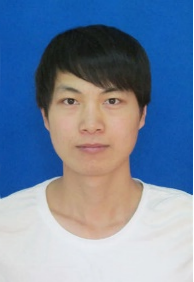
Zhongtao Cheng
Sichuan University, China
Speech Title: Controlling Light through
Scattering Media for Optical Focusing and Imaging
Abstract: In optical transparent media, the propagation path of light is predictable. However, in optical scattering media, due to the inhomogeneity of the microscopic refractive index, the light’s path and the information it carries are randomly scrambled. Typical scattering media include ground diffusers,biological tissues, clouds, and turbid water. Wavefront shaping (WFS) technology shows great promise for controlling light propagation in complex scattering media. By shaping the optical wavefront incident on a scattering media, scattering can be partially suppressed, allowing light to converge to a tight focus through the scattering medium for optical imaging or excitation. In this talk, I will present our latest advancements in using wavefront shaping technology to control light for focusing and imaging through scattering media. This includes new methods for enhancing the accuracy and speed of wavefront shaping, achieving optical focusing inside scattering media with the interaction of ultrasound and light, and improving imaging quality through scattering media. These studies will help overcome the optical diffusion limit in photonics and hold significant potential for applications in fields such as optical imaging, optical manipulation, and laser therapy through scattering media.
Biodata: Dr. Zhongtao Cheng is currently a professor in Sichuan University, China. Prior to this, he was a postdoctoral research associate at California Institute of Technology, USA. He is interested in developing systems and instruments for high-precision optical measurement and sensing based on fundamental properties of light such as interference, diffraction, scattering, polarization, etc. One specific interest is to developing wavefront shaping techniques to break the optical diffusion limit of the operating depth of optical techniques. He also researches on laser remote sensing techniques for detecting the optical parameters of atmospheric aerosols, which is a helpful tool for studying the environment and climate of the earth.

Yu Fu
Shenzhen University, China
Speech Title: Full-field Vibration Measurement using an LDV-enhanced Imaging Technique
Abstract: Vibration measurement is essential to structural dynamic analysis and defect localization since it can validate finite element or analytical vibration models. Laser Doppler vibrometry (LDV) and high-speed digital image correlation (DIC) have become dominant methods for experimental vibration measurement. However, vibration-based defect localization requires high spatial resolution and accurate measurement. Unfortunately, the resolution of DIC is not enough to detect data anomalies caused by structural defects. On the other hand, LDV cannot achieve high-precision defect localization due to limited spatial resolution. We propose a full-field, high-precision steady-state and non-steady-state vibration measurement method based on an LDV-enhanced imaging technique. The experiment proves that the spectrum of LDV offers a guideline to remove the noise of cameras and can dramatically improve the vibration measurement resolution. The data fusion results show that a frequency-scanning test can easily perform reference-free defect localization on various structures.
Biodata: Dr. Yu Fu received his bachelor's in Mechanical Engineering from Shanghai Jiao Tong University and his Master's and Doctoral Degree in Mechanical Engineering from the National University of Singapore.
In 1997, Dr Fu joined the Department of Mechanical Engineering at the National University of Singapore as a Professional Officer, pursuing research on optical measurement and image processing techniques. He has published more than 100 publications in international leading journals and proceedings. In 2006, he was awarded the prestigious Alexander von Humboldt research fellowship and worked with the well-known applied optics research institute, Institut für Technische Optik (ITO), the University of Stuttgart, on optical dynamic measurement. He joined Temasek Laboratories of Nanyang Technological University in 2009. In July 2011, Dr. Fu received the prestigious Temasek Fellowship from Singapore’s Defence Ministry and Nanyang Technological University to be a Principal Investigator in Temasek Laboratories. In 2018, he joined Shenzhen University as a Professor in the College of Physics and Optoelectronic Engineering. At present, Dr Fu is doing research in the area of optical dynamic measurement and structure health diagnostics. Dr Fu is also a Fellow member of SPIE.
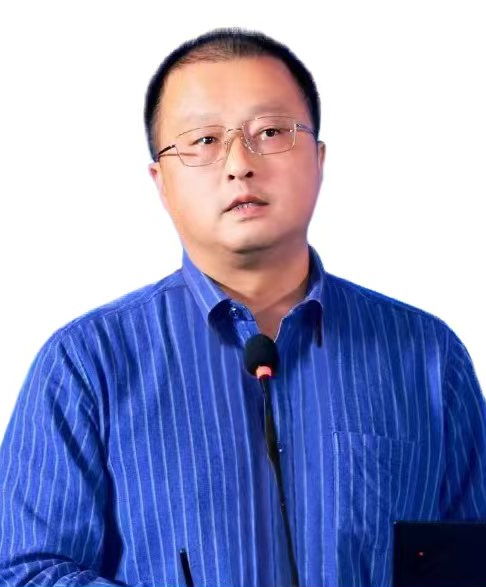
Qican Zhang
Sichuan University, China
Speech Title: Research on 3D Reconstruction based on
Fringe Projection and Phase Analysis
Abstract:
Optical
non-contact 3D reconstruction based on fringe projection
(i.e. structured light illumination) and phase analysis
has been deeply studied and widely used in various
industries fields. 3D Sensing and Machine Vision
Laboratory of Sichuan University has taken the lead in
conducting profile measurement (i.e. 3D reconstruction)
research based on fringe projection in China and has
been actively promoting the application of scientific
research results. The report reviewed some research
achievements made by this research group in the field of
computational optical imaging in recent years, and
described the research progress in dynamic and complex
3D reconstruction technology by combining fringe
projection, fringe phase analysis and deep learning
algorithms. It includes the basic principle,
implementation scheme and application of such these
works.
Biodata: Qican Zhang graduated from Sichuan University in 2005 and received his doctor degree in Optical Engineering and is a full professor in the same university now.
He is an Associate Editor of Optics Express and Advanced Imaging; Editorial board member of Optic and Laser in Engineering; Steering committee member of Asian Society for Experimental Mechanics (ASEM). He is also a member of the Optical Society of America (OSA), member of International Society for Optical Engineering (SPIE), senior member of Chinese Optical Society (COS), standing committee member of Opto-electronic Technology Committee of COS, and committee member of Chinese Society for Optical Engineering (CSOE).
His research interests include optical 3D sensing, computer vision, optical information processing and related applications. Devoting himself in 3D sensing study for near 30 years, he won the second prize of National Technological Invention Award of China, the first prize of Natural Science Award of the Ministry of Education and the National Excellent Doctoral Dissertation Award nomination issued by the Ministry of Education.
He was recognized by others with his research fruits, included some key technologies with intellectual property rights; more than 200 publications in academic journals, in which over 90 are indexed by SCI and referenced over 3300 times by other SCI papers; 35 authorized technical invention patents and some chapters of 3 books.

Tomoyoshi Shimobaba
Chiba University, Japan
Speech Title: Single-pixel Imaging using NMF, Audio Data Compression, and Deep-learning with Simple Auantization
Abstract: Single-pixel imaging (SPI) is a unique imaging technique employing a single-pixel detector and structured pattern illumination. The critical issues are the requirement of a large number of structured patterns to obtain high-resolution reproduced images, leading to a long measurement time, and the large data size of the measured light intensity data. This study introduces our techniques to tackle these issues. To reduce the number of structured patterns, we proposed nonnegative matrix factorization (NMF)- and deep-learning-based SPIs. NMF can produce non-negative structured patterns that can effectively capture the spectra of target objects. Deep neural networks can also produce structured patterns; however, the structured patterns generally have grayscale with positive and negative values. We developed a simple quantization method to display the structured patterns on high-speed binary spatial light modulators. The data amount of the intensity data is proportional to the resolution of reproduced images. Increasing the resolution leads to a significant data increase. To the best of our knowledge, data compression for SPI has not yet been investigated. This study proposes SPI data compression using audio data compression methods such as MP3, Ogg Vorbis, and FLAC.
Biodata: Prof. Tomoyoshi Shimobaba received his B.E. and M.E. degrees from Gunma University, Japan in 1997 and 1999, respectively. He then received his D.E. degree from Chiba University, Japan in 2002. From 2002 to 2005, he served as a special postdoctoral researcher at RIKEN. He was an associate professor at the Graduate School of Science and Engineering, Yamagata University, Japan from 2005 to 2009, and subsequently an associate professor in the Graduate School of Engineering, Chiba University from 2009 to 2019. He is currently a professor in the Graduate School of Engineering, Chiba University. Additionally, he was a visiting researcher at Tampere University of Technology (Finland) in 2011 and a visiting professor at Warsaw University of Technology (Poland) in 2014. He currently serves as editors for Optics Letters, Scientific Reports, and IET Image Processing.

Manoranjan Paul
Charles Sturt University, Australia
Speech Title: AI in Everywhere: Show Casing our New Developments
Abstract: AI is transforming research across a wide range of disciplines, from science and medicine to the social sciences and humanities. This presentation will focus on our newly developed AI technologies in (i) agriculture-crops disease analysis, soil organic carbon estimation, (ii) multimedia-point cloud compression, GenAI for virtual image constructions/assessment, (ii) digital health-cancer detection, (iv) quantum computing- image compression/representation, and (v) ChatBot- HDR students, etc.
Biodata: Manoranjan Paul received his Ph.D. from Monash University, Australia. He is an award-winning researcher such as Researcher of the Year in 2017 by Australian Computer Society (ACS), Golden Disruptor by ACS, listed in the Best Computer Science Scientists in Australia, and Top 2% Scientist for last 5 years according to Elsevier and Stanford. Currently, he is a Professor at Charles Sturt University, where he is the Director the Computer Vision Laboratory and leader of the Machine Vision & Digital Health (MaViDH) Research Group. He has secured $10M+ in competitive research funding including two ARC DPs, ASPIRE Japanese grants, and supervised 19 PhD and 3 Professional Doctoral students to completion. He has published 250+ peer-reviewed papers, including 100 journal articles. His research interests include AI, video coding, image processing, and digital health. He serves as an Associate Editor for three prestigious IEEE Transactions journals such as TIP, TMM, and TCSVT. He has also served as a keynote speaker at major 5 IEEE conferences and organised PSIVT and DICTA as a General Chair. He has contributed to the world video coding, point cloud compression and deep learning standardisations.
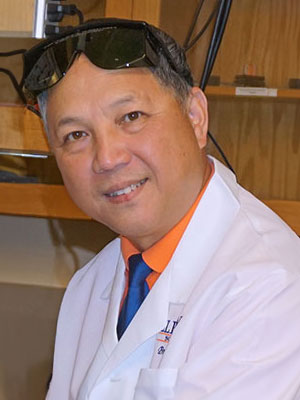
Bruce Z. Gao
Clemson University, USA
Speech Title: Deep Learning Model for Hyperspectral Image Classification: Part of NSF EPSCoR Project-ADAPT in SC
Abstract: The US NSF-funded EPSCoR research program, ADAPT in SC RII Track-1 project, aims to enhance research capacity in South Carolina by leveraging artificial intelligence, life and social sciences, and bioengineering. This interdisciplinary, statewide initiative focuses on fundamental research, education, workforce development, and industry partnerships, capitalizing on South Carolina's strengths in AI applications for biomedical devices while addressing the critical need to improve healthcare delivery in the state.
We present our research as part of the ADAPT program, focusing on the development of a deep learning model for hyperspectral image classification to analyze the growth of bacteria-based biofilms, which are designed to achieve fouling prevention for underwater vehicles. This project utilized several Python libraries for image analysis and processing with deep learning. A total of 767 input files were used, with image dimensions of 1024×4096 pixels, each row representing an individual image. The images were normalized using z-score normalization to set the dataset's mean to 0 and standard deviation to 1. They were then randomly divided into an 80/20 training/validation split, with 80% allocated for training and 20% for validation, using a batch size of 256. The autoencoder employed the Adam optimizer, with a learning rate of approximately 0.0013 and a weight decay of 8.75 × 10-6.
The Whiskbroom hyperspectral imaging (HSI) method was successfully applied alongside a supervised deep learning algorithm to collect, prepare, preprocess, and classify the images based on the recorded spectra. Our preliminary data indicates that the unsupervised approach effectively performs feature extraction, image reconstruction, and clustering, allowing differentiation among hyperspectral images obtained from 550 to 850 nm that contain marine microbes, empty space, or agar solutions.
Biodata: Dr. Bruce Gao earned his BS in Physical Electronics and Optoelectronics in 1985 and his MS in Applied Laser Physics in 1988, both from Tianjin University, China. He received his PhD in Biomedical Engineering from the University of Miami in 1999 and completed a three-year postdoctoral training in cell and tissue engineering at the University of Minnesota. Currently, he is the South Carolina SmartState Endowed Chair in Biofabrication Engineering and a professor in the Department of Bioengineering at Clemson University. His long-term research goal is to understand the mechanisms by which various cell types form functional tissues. To achieve this, he focuses on microfabrication, laser cell micromanipulation, coherent light, nonlinear optics-based 3D imaging, and multiscale modeling to explore cell-cell interactions within engineered microenvironments, such as biochips. His current research projects include: 1) a single-neuron-based cell biochip for investigating developmental neurotoxicity (NIH SC INBRE); 2) electrical and mechanical coupling between cardiogenic bone marrow stem cells and cardiac cells (NIH SC COBRE); and 3) the development of a hybrid laser microbeam and microfluidics system for high-throughput tissue scaffold creation (NSF EPSCoR).
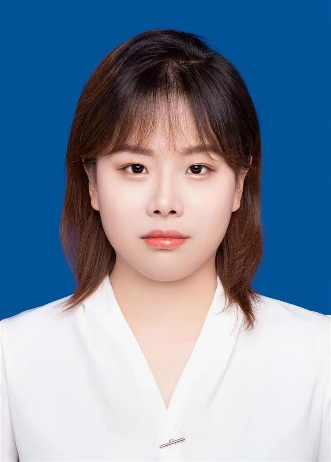
Xiaoyang Guo
Huazhong University of Science and Technology, China
Speech Title: Dual Electro-Optic Comb Interferometry via Serrodyne Frequency Shifting for Nanometric Absolute Distance Measurement
Abstract: Dual electro-optic frequency comb ranging systems have become essential tools in precision metrology. Conventional implementations typically employ acousto-optic modulators (AOMs) to shift the local oscillator (LO) frequency and resolve degeneracies in resulting beat notes. However, the reliance on AOMs imposes limitations on tuning flexibility, response speed, power efficiency, and compatibility with integrated photonic platforms, which are critical for compact and scalable optical ranging systems. With the growing demand for miniaturized and energy-efficient measurement systems, replacing AOMs with alternative approaches has become an important goal in advancing dual electro-optic frequency comb interferometry.
In this work, we introduce an AOM-free dual electro-optic frequency comb ranging system that utilizes serrodyne modulation via an electro-optic modulator (EOM) to shift the LO frequency. The serrodyne-modulated EOM preserves phase coherence while reducing RF power consumption by 92% compared to traditional AOM-based setups. Experimental validations demonstrate that this AOM-free approach initially achieves multi-wavelength ranging uncertainties as low as 1.1 µm, subsequently reduced to 2.8 nm through single-wavelength interferometry, and ultimately achieving sub-nanometric measurement precision with Allan deviations below 0.1 nm at a 1 ms integration time. The system also enables high-speed tracking of dynamic displacements up to 100 kHz from piezoelectric actuators, as well as 3D surface reconstruction of low-reflectivity targets. Notably, stable ranging performance is maintained under non-ideal sawtooth waveform conditions, demonstrating the technique’s robustness and tolerance to waveform imperfections in practical environments.
This AOM-free configuration significantly enhances system agility, energy efficiency, and integration potential. In contrast to AOM-based architectures, serrodyne modulated EOMs offer broader frequency tuning range, faster response times, and lower power consumption, making them highly suitable for integration with silicon photonic platforms. These improvements facilitate the development of compact and robust ranging systems for on-site precision metrology, biomedical diagnostics, and industrial process monitoring. The demonstrated architecture is broadly applicable to dual-comb interferometry beyond distance measurement, including phase-sensitive sensing, dynamic object inspection, and spectroscopic analysis, offering a scalable, power-efficient, and integration-friendly platform for high-resolution sensing across diverse scientific and engineering applications.
Biodata: Xiaoyang Guo received the B.Sc. degree in physics in 2022 and is currently pursuing the Ph.D. degree at the School of Physics, Huazhong University of Science and Technology, Wuhan, China. She is with the National Gravitation Laboratory and the MOE Key Laboratory of Fundamental Physical Quantities Measurement. Her research interests include optical frequency combs, precision metrology, and microresonator-based comb generation.
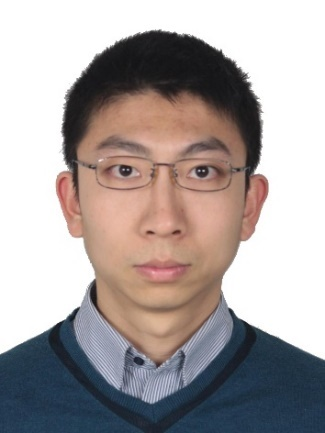
Yongkai Yin
Shandong University, China
Speech Title: Some Explorations for High-speed Fringe Projection Profilometry
Abstract: Fringe projection profilometry (FPP) is one of the typical techniques for 3D shape measurement. High speed FPP is desired in many applications, including on-line inspection, handheld scanning and expression capture. The basic idea to improve the speed of multi-frame fringe projection is to reduce the frame number required for phase calculation, or accelerate the framerate of fringe projection and image acquisition. Our recent works about improving the speed of FPP are presented, i.e., dedicated two-step phase-shifting algorithm for FPP, 2,000,000 fps single-pixel 3D imaging, and accelerated FPP using snapshot compressive imaging.
Biodata: Dr. Yongkai Yin is an associate professor at Shandong University. He received his bachelor, master and doctor degrees from Tianjin University (2006), Shenzhen University (2009) and Tianjin University (2012), respectively. He was a “Humboldt Fellow” in Leibniz University Hannover (2017-2019), and visiting fellow in University of Wollongong (2014-2015). He has authored and co-authored over 70 research articles in academic journals. He was listed in the World's Top 2% Scientists 2023/2024. His research interests include optical 3D measurement, single-pixel imaging, and machine vision.
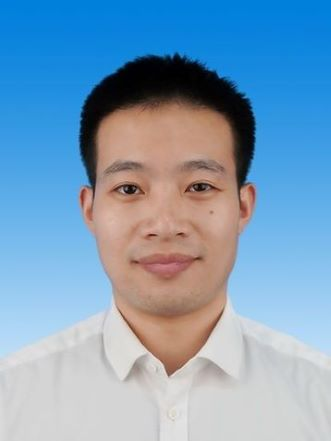
Shijie Feng
Nanjing University of Science and Technology, China
Speech Title: Structured-light 3D Imaging via Physics-informed Deep Learning
Abstract: In recent years, deep learning has emerged as a powerful tool by training a deep neural network (DNN) to address problems in optics and photonics. It is currently promoting increased interest and gaining extensive attention for its utilization in the field of optical metrology. Usually, people often depend on a data-driven DNN to handle all cases once it is trained. However, we find it hard for the data-driven model to address all problems and perform well in all scenarios. Deep learning models often exhibit high variance and may fall into local loss minima during training, thus giving unreliable and inaccurate predictions. To this end, we introduce a physics-informed deep learning method for fringe pattern analysis (PI-FPA) and a cross-domain learning (CDL) framework for adaptive structured-light 3D imaging. PI-FPA is developed by integrating a lightweight DNN with a learning-enhanced Fourier transform profilometry (LeFTP) module. The LeFTP module can embed the prior knowledge in the network structure and the loss function to directly provide reliable phase results for new types of samples. Regarding the CDL framework, it can dynamically synthesize DNNs by integrating a novel mixture-of-experts (MoE) architecture with a gating neural network (GNN). The MoE architecture efficiently extracts features from fringe images across different domains, while the GNN adaptively orchestrates the synthesis of multiple expert DNNs. Our approaches provide novel and flexible solutions for generalizable structured-light 3D imaging.
Biodata: Dr. Shijie Feng is a Zijin Youth Professor at Nanjing University of Science and Technology (NJUST), where he works at the Smart Computational Imaging Laboratory (SCILab: www.scilaboratory.com) within the School of Electronic and Optical Engineering. His research focuses on the development of novel high-speed and intelligent 3D measurement technologies based on structured light illumination. He has authored over 70 peer-reviewed publications, which have collectively garnered more than 8,000 citations. His work has been featured on the covers of journals, including Light: Science & Applications, Optica, Laser & Photonics Reviews, PhotoniX, Advanced Photonics, and others. Dr. Feng currently serves as an Associate Editor of Frontiers in Photonics and a Youth Editor of Advanced Devices & Instrumentation. He is also a member of several academic committees, including the Holography and Optical Information Processing Committee of the Chinese Optical Society, the 3D Imaging and Display Committee of the China Society of Image and Graphics, and the Youth Committee of the Computational Imaging Committee of the Chinese Society for Optical Engineering.
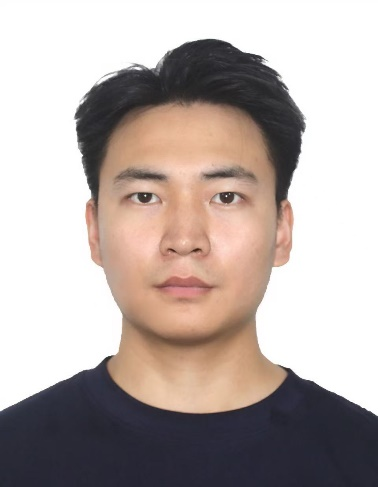
Jiawen Zhi
Huazhong University of Science and Technology, China
Speech Title: Dual-multi-soliton Microcomb
Ranging
Abstract: Microresonator-based laser frequency combs (microcombs) have revolutionized optical metrology through their compact architecture, broadband spectra, and high repetition rates. Nevertheless, critical challenges persist. The coherent single-soliton state suffers from low power conversion efficiency (~1% of pump power), whereas the chaotic state, although it offers improved efficiency, is fundamentally constrained by thermodynamic noise-induced precision degradation. This efficiency-precision trade-off severely limits their deployment in practice.
We report, for the first time, the realization of dual-comb interferometry based on the deterministic multi-soliton states, enabling ultrafast and high-precision metrology. Compared with the single-soliton state, the multi-soliton states offer superior power conversion efficiency and enhanced accessibility, while also achieving nanometer-level distance precision surpassing that of the chaotic states. Experimental validation reveals the measurement uncertainty confined within ±17 nm under laboratory conditions. With three solitons in both the signal and local combs, the precision reaches 2.12 nm at 2 μs averaging time and improves to 5.48 pm at 500 μs. The proposed scheme exhibits broad applicability, demonstrated through vibration detection, rotational dynamics analysis of a spinning disk, and real-time tracking of an unmanned aerial vehicle.
We further investigate photon-level ranging at femtowatt optical power levels. By employing time-correlated single-photon counting, the measurement uncertainty remains below ±9.5 μm, while the Allan deviation achieves 3.57 μm at 1 s and 202 nm at 50 s, utilizing the five-soliton signal comb and the single-soliton local comb. Finally, we extend the technique to long-range measurements over ~267 m in outdoor environments, and demonstrate its potential for non-line-of-sight imaging.
Multi-soliton-based ranging demonstrates superior precision, faster acquisition rates, and enhanced power conversion efficiency relative to the single-soliton approaches. This work is expected to open new directions for research leveraging multi-soliton microcombs in a range of applications, including optical distance metrology, high-capacity communications, precision spectroscopy, and optical time-frequency transfer.
Biodata: Jiawen Zhi earned his BS in Optoelectronic Information Science and Engineering from Wuhan University of Technology. He is currently pursuing his PhD in Precision Measurement Physics at Huazhong University of Science and Technology. His research focuses on the microcomb ranging and microcomb-based microwave frequency synthesis.
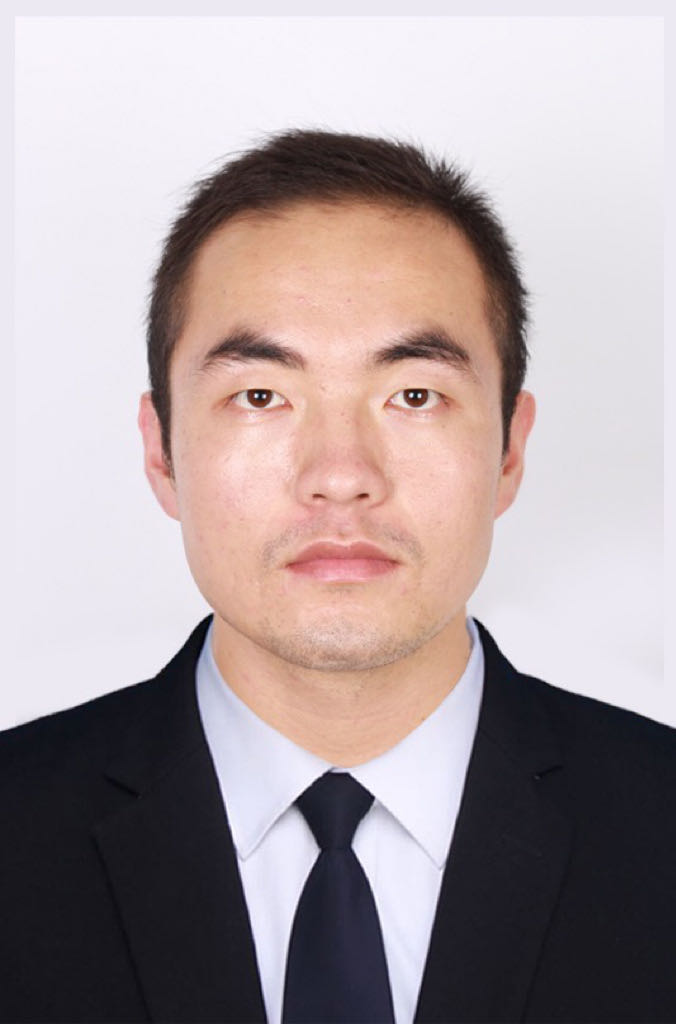
Junfei Shen
Sichuan University, China
Speech Title: TBA
Abstract: TBA
Biodata: Junfei Shen received his Ph.D. from the College of Optoelectronic Science and Engineering at Zhejiang University. In 2018, he joined Hangzhou Hikvision Digital Technology Co., Ltd. as a Senior Algorithm Engineer at the R&D Center. He later became an Associate Professor at the College of Electronics and Information Engineering, Sichuan University, focusing on computational imaging. In 2021, he received the "Hui Zhi Future" Innovative Teaching Award of Sichuan University-Good Future. Currently, he is leading several projects, including the National Natural Science Foundation of China, the MIIT's “Leading the Charge with Open Competition” Project, the Tianfu Emei Plan Talent Project of Sichuan Province, the Key Research and Development Program of Sichuan Province, and the Chengdu Key Research and Development Support Program Project, etc. He has published over 30 high-level research papers and holds more than 30 granted patents. In 2022, he was selected for the Talent Program of Sichuan Province and the Youth Talent Program of China Association for Science and Technology.
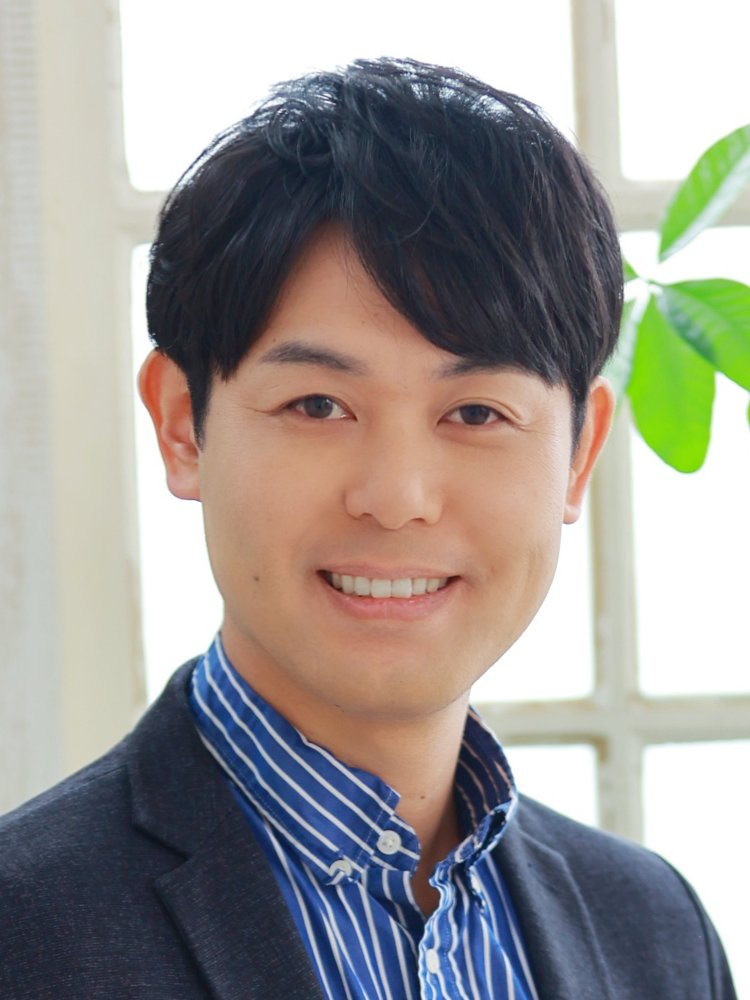
Tatsuki Tahara
National Institute of Information and Communications Technology (NICT), Japan
Speech Title:
Multidimension-multiplexed Holography with Daily-use
Light
Abstract: We present a daily-use-light holography technique in which multidimensional information such as 3D space, phase, wavelength, and polarization are simultaneously recorded as a multiplexed hologram. Multidimensional information is actively acquired in the field of machine vision and utilized for object recognition. Holography is well known as a technique to acquire multidimensional information on a 2D recording material by introducing laser light sources and spatial or temporal frequency-division multiplexing. Our research group has enabled multidimension-multiplexed holographic imaging with a monochrome image sensor without spatial or temporal frequency-division multiplexing by developing the computational coherent superposition (CCS) scheme. Exploiting CCS and incoherent digital holography or self-reference digital holography, we have achieved simultaneous holographic image sensing of multidimensional information with daily-use light and a monochrome image sensor. We present the optical designs to realize the proposed holography and the experimental results obtained with the developed optical systems.
Biodata: Dr. Tatsuki Tahara received the B.E., M.E., and D.E. degrees in electronics and information science from Kyoto Institute of Technology, Kyoto, Japan, in 2007, 2009, and 2013, respectively. He was a Research Fellow with Japan Society for the Promotion of Science (JSPS), from 2011 to 2013; an Assistant Professor with the Faculty of Engineering Science, Kansai University, Osaka, Japan, from 2013 to 2018; a Specially-Appointed Associated Professor with the National Institute of Informatics (NII), Tokyo, Japan, from 2018 to 2019; and a Researcher with Precursory Research for Embryonic Science and Technology (PRESTO), Japan Science and Technology Agency (JST), from 2016 to 2020. He was also a Researcher with the National Institute of Information and Communications Technology (NICT), Tokyo, from 2019 to 2021, where he has been a Senior Researcher, since 2021. His research interests include incoherent digital holography, fully-passive natural-light holography, phase-shifting interferometry, digital holography, and development of digital holography apparatus. He was a Topical Editor of Applied Optics (OPTICA) from 2017 to 2023. He is an editorial board of Journal of Optics (IOP Publishing) since 2021.
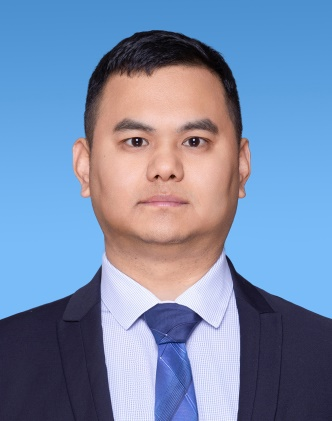
Lei Lyu
Henan University of Technology, China
Speech Title: Generative
Deep-learning-embedded Asynchronous Structured Light for
Three-dimensional Imaging
Abstract: Three-dimensional (3D) imaging with structured light is crucial in diverse scenarios, ranging from intelligent manufacturing and medicine to entertainment. However, current structured light methods rely on projector–camera synchronization, limiting the use of affordable imaging devices and their consumer applications. In this work, we introduce an asynchronous structured light imaging approach based on generative deep neural networks to relax the synchronization constraint, accomplishing the challenges of fringe pattern aliasing, without relying on any a priori constraint of the projection system. To overcome this need, we propose a generative deep neural network with U-Net-like encoder–decoder architecture to learn the underlying fringe features directly by exploring the intrinsic prior principles in the fringe pattern aliasing. We train within an adversarial learning framework and supervise the network training via a statistics-informed loss function. We demonstrate that by evaluating the performance on fields of intensity, phase, and 3D reconstruction. It is shown that the trained network can separate aliased fringe patterns for producing comparable results with the synchronous one.
Biodata: Lei Lyu received BEng from Henan University of Science and Technology, China in 2007, MEng from Zhengzhou University, China in 2011 and PhD from the University of Wollongong, Australia in 2015. He was a Postdoctoral Fellow in Singapore University of Technology and Design, Singapore from 2015 to 2016. Now he is professor in Henan University of Technology, China. His research interests include 3D shape measurement, 3D printing and 3D data processing. He received 2 funds of NSFC, obtained the title of Leading Talents in Basic Research of Henan province, Talents with outstanding contributions to local economy in Zhengzhou City.
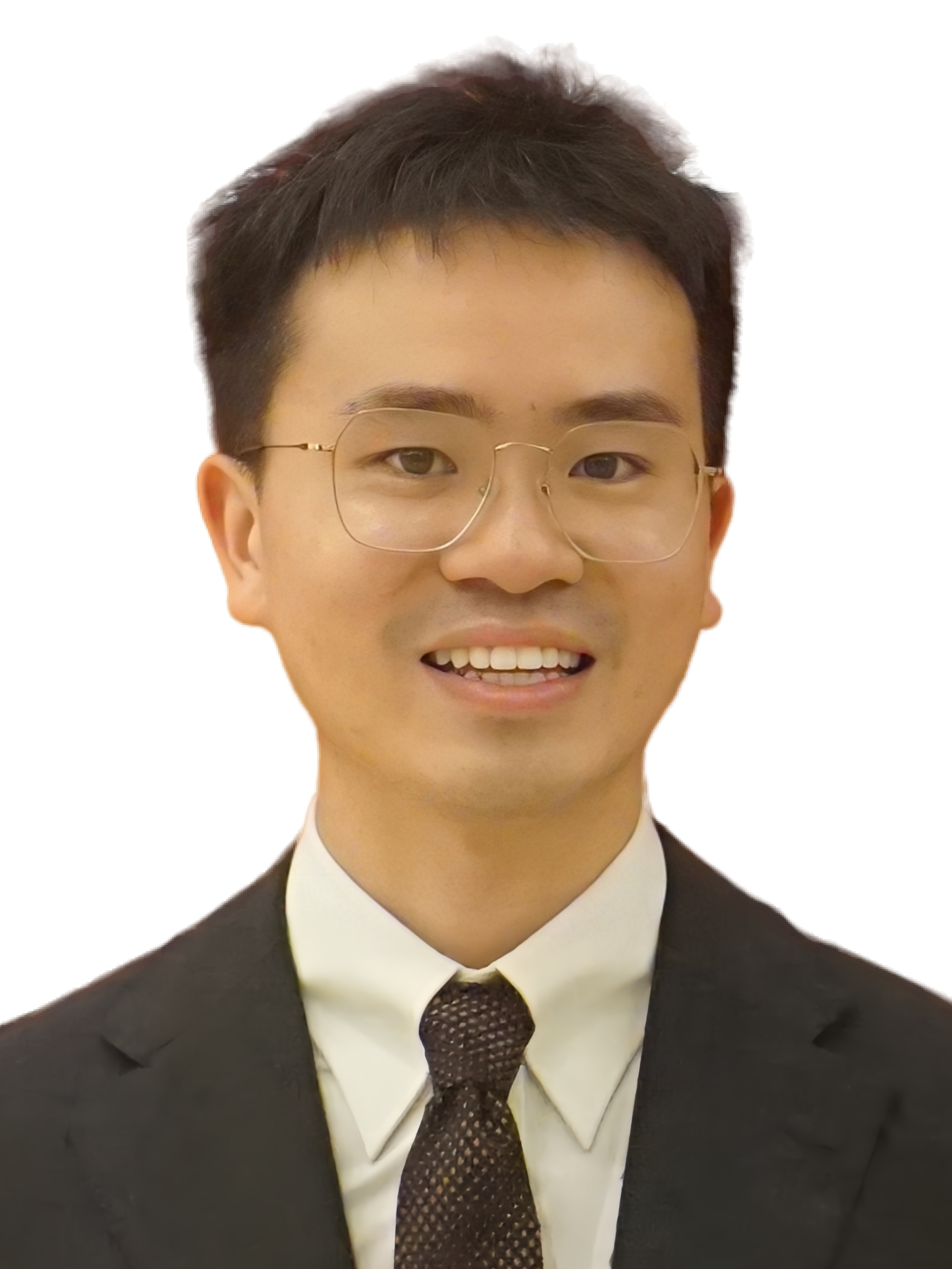
Zhoujie Wu
Sichuan University, China
Speech Title: Interferometric
Parallel Single-Pixel Imaging for 3D Surface Reconstruction: Performance Modeling and Emerging Opportunities
Abstract: The rise of intelligent manufacturing and autonomous vehicles has increased the demand for three-dimensional (3D) reconstruction under complex reflection and transmission conditions. Traditional structured light techniques, relying on point-to-point triangulation, struggle to achieve accurate 3D measurements in these challenging scenarios. Parallel single-pixel imaging (PSI) has shown remarkable advantages in extreme conditions, emerging as a promising solution for precise 3D reconstruction. However, existing studies lack a comprehensive theoretical model to well explain its underlying mechanisms and quantitatively characterize its performance. In this talk, we introduce our developed comprehensive theoretical model of PSI, encompassing both imaging and noise models. The imaging model mathematically describes light transport coefficients under different reflection and transmission conditions, elucidating the intrinsic mechanisms of successful 3D imaging using PSI. The noise model quantitatively evaluates environmental noise effects, providing insights into error distribution within PSI systems. These theoretical foundations elucidate the generality and robustness of PSI. Finally, we discuss potential challenges and future opportunities for PSI in advanced 3D reconstruction tasks.
Biodata: Dr. Wu is an Associate Professor in the Department of Electronics and Information at Sichuan University (SCU). He received his Ph.D. and B.S. degrees from SCU in 2021 and 2016, respectively. His research interests focus on optical metrology, photomechanics, and single-pixel imaging. He has published over 20 SCI-indexed papers and 10 EI-indexed papers, with more than 1,200 citations. Dr. Wu has been recognized as one of the “World's Top 2% Scientists”. He is also a recipient of the 'Wang Daheng Optical Award' from the Chinese Optical Society, the Fellowship of the Postdoctoral Program for Innovative Talents of China, and the Innovative Paper Nomination Award from the Chinese Optical Engineering Society.
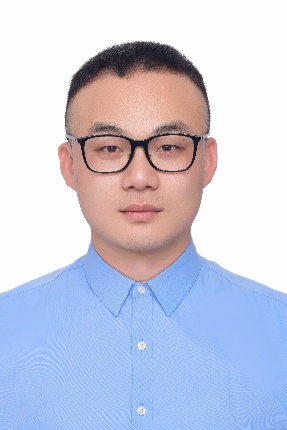
Hanzhong Wu
Huazhong University of Science and Technology, China
Speech Title: Ultrafast Optical
Ranging with Real-time Chirped Pulse Interferometry
Abstract: Laser frequency combs, which are composed of a series of equally spaced coherent frequency components, have triggered revolutionary progress in precision spectroscopy and optical metrology. Length/distance is of fundamental importance in both science and technology. We describe a ranging scheme based on chirped pulse interferometry. In contrast to the traditional spectral interferometry, the local oscillator is strongly chirped which is able to meet the measurement pulses at arbitrary distances, and therefore, the dead zones can be removed. The distances can be precisely determined via two measurement steps based on the time-of-flight method and synthetic wavelength interferometry, respectively.
To overcome the speed limitation of the optical spectrum analyzer, the spectrograms are stretched and detected by a fast photodetector and oscilloscope and consequently mapped into the time domain in real time. The experimental results indicate that the measurement uncertainty can be well within 2 μm, compared with the reference distance meter. The Allan deviation can reach 0.4 μm at 4 ns averaging time and 25 nm at 1 μs and can achieve 2 nm at 100 μs averaging time. We also measured a spinning disk with grooves of different depths to verify the measurement speed, and the results show that the grooves with about 150 m/s line speed can be clearly captured. Our method provides a unique combination of non-dead zones, ultrafast measurement speed, high precision and accuracy, large ambiguity range, and only one single comb source.
This system could offer a powerful solution for field measurements in practical applications in the future.
Biodata: Hanzhong Wu, Associate Professor, member of the Geometric Quantities Professional Committee of Chinese Society for Metrology and Testing, member of the organizing committee of CLEO-PR, and a peer-review expert for the National Natural Science Foundation of China. He was awarded the Outstanding Doctoral Dissertation Award by Chinese Instrument and Control Society. He has been the principal investigator of more than ten projects, including the National Key R&D Program projects, National Natural Science Foundation of China, Enterprise Joint Fund, etc. He has been engaged in the research of ultra-precision measurement technology based on optical frequency combs, and the development of new types of optical combs and their scientific instruments. He has published more than 50 papers in journals such as Nature Communications, Advanced Photonics Nexus, Optics Letters, Applied Physics Letters, etc., and applied for more than 20 invention patents. The graduate students he supervised have received awards such as the National Scholarship, Outstanding Graduate Student, Outstanding Academic Report Award, etc.

Muhammad Rizwan Khokher
CSIRO Australia, Australia
Speech Title: Dynamic Vision-Based Early and Pre-Harvest Yield Estimation in Viticulture Using Grapevine Inflorescence and Bunch Analysis
Abstract: Accurate and scalable yield estimation is a critical component of vineyard management and wine production planning. Traditional yield estimation methods, while reliable, are labour-intensive, time-consuming, and often limited in their spatial resolution, leading to inefficiencies and potential inaccuracies. This work presents two complementary vision-based machine learning approaches that address these challenges across different stages of the grapevine growing season.
The first approach focuses on early-season yield estimation by detecting and counting grapevine inflorescences shortly after budburst at phenological stage E-L 12. RGB video data was collected from multiple vineyards and annotated with bounding boxes to create a high-quality digital ground-truth dataset. A deep learning-based detection model based on ResNeXt and RetinaNet, coupled with a tracking pipeline based on KSP and SiameseNet, was developed to automatically detect and track inflorescences across video frames. Trained and tested on an in-house dataset (made public), this system achieved an average precision of 80.00%, a recall of 83.92%, and an F1-score of 80.48% through five-fold cross-validation. When applied to unseen test videos, the model reported a normalized mean absolute error of 10.80% and an R² of 0.86 in inflorescence counts compared to manual ground-truth counts. Importantly, this early inflorescence counting approach enabled yield predictions within 4% to 11% of the final harvest weight, demonstrating its significant value for early-season decision-making.
The second approach extends yield estimation to the pre-harvest stage, leveraging advancements in dynamic vision-based analysis. Grapevine bunches were automatically segmented using a Mask R-CNN model with a Swin Transformer backbone, and individual bunches were tracked across sequential frames using a SiamFC-based tracker. A multitask point supervision method was employed to estimate the number of berries per bunch, and bunch weights were estimated via empirical calibration using known weight distributions. The final yield was predicted by aggregating the tracked bunch weights. This system was evaluated using both a publicly available dataset (Embrapa WGISD) and an in-house dataset, achieving harvest weight prediction errors of less than 5% in two of three vineyard panels. In one panel with densely packed bunches, an error of approximately 15% was observed, yet this still represented a substantial improvement over the conventional estimation error of up to 30%.
Together, these two vision-based approaches offer a unified, scalable framework for automated vineyard yield estimation across the growing season, from early-stage inflorescence analysis to pre-harvest bunch assessment. By leveraging deep learning for object detection, segmentation, tracking, and feature regression, the proposed methods demonstrate that machine vision can significantly enhance the accuracy, efficiency, and practicality of in-field yield estimation, paving the way for smarter and more adaptive viticultural practices.
Biodata: Dedicated and skilled 'Senior Experimental Scientist' with a PhD and over ten years of experience, specializing in computer vision, machine/deep learning, artificial intelligence, and data science, with a passion for pushing the boundaries of machine perception. Demonstrated expertise in developing state-of-the-art algorithms and deep learning models to tackle complex visual tasks across diverse industries/domains. Proven track record of impactful research, with published papers in top-tier conferences/journals and contributions to innovative and cutting-edge advancements in the field. Collaborative and advanced, leveraging extensive knowledge to create practical AI-driven solutions. Seeking to apply my expertise in a dynamic research environment, driving transformative progress and revolutionizing industries through the power of computer vision, ML, and AI.

Ganesh Muthukumaran Balasubramaniam
Nanyang Technological University, Singapore
Speech Title: Interpretable Machine Learning Algorithms for Image
Reconstruction in Lensless Imaging
Abstract: Lensless in-line holographic imaging is a lens-free microscopy technique that records interference patterns or holograms of samples and then computationally reconstructs images of the sample. This approach enables compact, low-cost microscopes with a large field of view, which is valuable for point-of-care and high-throughput biomedical applications. Reconstructing images from a single in-line hologram is, however, challenging due to the loss of phase information and the presence of twin-image and zero-order artifacts. Traditionally, iterative algorithms have been used to address these issues, but these can be slow, require multi-height or multi-angle hologram recordings, and struggle with complex noise.
Over the last decade, deep learning has emerged as a powerful tool for fast holographic reconstruction, often achieving single-shot imaging without the need for additional hardware.2, 3 A key focus in recent years has been on making these deep learning models interpretable and explainable, ensuring that the reconstructions and decisions can be trusted in biomedical settings.4, 5 In this talk, we review the state-of-the-art machine learning models for image reconstruction in lensless in-line holography, the techniques used to interpret these models, and our efforts in developing an interpretable machine learning algorithm that retrieves object information from single-shot lensless measurements. We specifically highlight how our model achieves high-resolution reconstructions while providing insight into the features and signal pathways it uses to infer the object information, addressing not just the question of what the network predicts but also how.
Biodata: Dr. Ganesh Muthukumaran Balasubramaniam received an Integrated M.Sc. degree in Physics from the University of Hyderabad, India, in 2017, and a Ph.D. in Electrical and Computer Engineering from Ben-Gurion University of the Negev (BGU), Israel, in 2023. Following his doctoral studies, he undertook a postdoctoral fellowship at BGU, where he investigated artificial intelligence-driven solutions for computational imaging and optical wireless communication. He is currently a Research Fellow at the School of Electrical and Electronic Engineering, Nanyang Technological University (NTU), Singapore, where he focuses on developing computational imaging algorithms for biomedical diagnostics. His research interests include biomedical optical imaging, optical wireless communications, and machine learning techniques for signal processing.

Naveed Akhtar
University of Melbourne, Australia
Speech Title: Demystifying Deep Learning in Machine Vision: Challenges and Pathways to Transparency
Abstract: Deep learning stands as a cornerstone of contemporary machine vision, enabling groundbreaking applications across a range of domains. Despite its transformative capabilities, deep learning operates largely as a “black box,” offering limited interpretability of its internal decision-making processes. This opacity poses significant concerns—particularly in safety-critical environments—undermining both trust and accountability in machine vision systems.
This talk will critically examine the opaque nature of deep learning models within the context of computer vision, with a specific focus on their susceptibility to adversarial manipulation via subtle, often imperceptible, perturbations in inputs and model parameters. It will then explore emerging solutions to these challenges, drawing from state-of-the-art techniques aimed at enhancing the explainability and robustness of deep learning-based vision systems.
The discussion will be grounded in the cutting-edge research conducted by Dr. Akhtar’s lab, with contributions published in leading venues such as IEEE CVPR, IEEE TPAMI, ICML, and AAAI. Drawing on insights from multiple projects supported by prestigious organizations including DARPA, the Australian Research Council (ARC), and Google Research, the talk will build a coherent narrative around key findings and their implications for building more transparent and trustworthy AI-driven vision technologies.
Biodata: Naveed Akhtar is a Senior Lecturer at the University of Melbourne. He received his PhD in Computer Science from the University of Western Australia and Master degree from Hochschule Bonn-Rhein-Sieg, Germany. He is a recipient of the Discovery Early Career Researcher Award from the Australian Research Council. He is a Universal Scientific Education and Research Network Laureate in Formal Sciences, and a recipient of Google Research Scholar Program award in 2023. He was a finalist of the Western Australia's Early Career Scientist of the Year 2021. He is an ACM Distinguished Speaker and serves as an Associate Editor of IEEE Trans. Neural Networks and Learning Systems. He has served as an Area Chair for reputed conferences like IEEE Conf. on Computer Vision and Pattern Recognition (CVPR) and European Conference on Computer Vision (ECCV) on multiple occasions.

Shivasubramanian Gopinath
University of Tartu, Estonia
Speech Title: Engineering Axial Resolution in Spatially Incoherent Imaging Systems
Abstract: Axial resolution (AR) and lateral resolution (LR) are crucial in any imaging system. Both AR and LR are controlled by the numerical aperture (NA) of the imaging system. An imaging system capable of tuning the AR without affecting the LR has many useful applications in fields like microscopy, holography, etc. However, changing AR will invariably lead to a corresponding change in LR, as both parameters are governed by the NA. Several methods have been reported to change AR without affecting LR in recent years by using advanced coded phase masks (CPMs) [1], Bessel speckles [2], scattered Airy beams [3], and self-rotating beams [4]. All these methods have been demonstrated to change AR without affecting LR only in real-time. In this study, we present two computational imaging methods based on hybridization called incoherent hybrid imaging system (INCHIS) [5] and Airy beam ensemble called post-ensemble generation with Airy beams for spatial and spectral switching (PEGASASS) [6] for tuning AR independent of LR post-recording. In INCHIS, two recordings of a scene were made, one using a lens and another using an axicon, and the two recordings are combined with different ratios and processed with a point spread function (PSF). Advanced computational algorithms were developed for designing multiplexed phase masks [7]. Depending upon whether the resulting distribution has more contribution from axicon or lens, the AR can be tuned independently of LR, with the maxima and minima of AR located at the extreme points when the contributions from axicon and lens are zeros, respectively. In PEGASASS, at least four camera recordings were made using four unique cubic phase masks, and the resulting four Airy distributions were combined with different ratios. When the number of Airy contributions increased, the chaos increased, causing the axial and spectral correlation lengths to shrink, but the lateral correlation length remained constant. Consequently, with PEGASSAS, both AR and spectral resolutions can be tuned without affecting the LR. The performances of all the developed imaging techniques have been verified through simulations and optical experiments. 3D and 4D imaging results have been presented.
Biodata: Shivasubramanian Gopinath is a final-year Ph.D. candidate and junior research fellow at the University of Tartu, Estonia, specializing in computational imaging, diffractive optics, and incoherent digital holography. His doctoral research focuses on multispectral multidimensional imaging using chaotic scalar waves, with applications in cinematography, microscopy, and digital holography. He has authored or co-authored over 15 peer-reviewed publications in journals such as Optics and Lasers in Engineering, Scientific Reports, and Photonics, including breakthrough work on hybrid imaging techniques highlighted by IEEE Spectrum and Phys.org. Gopinath holds an M.Sc. and B.Sc. in Physics from Thiagarajar College, India, with first-class distinctions, and has received awards for academic excellence and conference presentations. Skilled in MATLAB and computational optics, he actively reviews for scientific journals and mentors students. His technical expertise is complemented by leadership roles in organizing conferences and outreach activities.